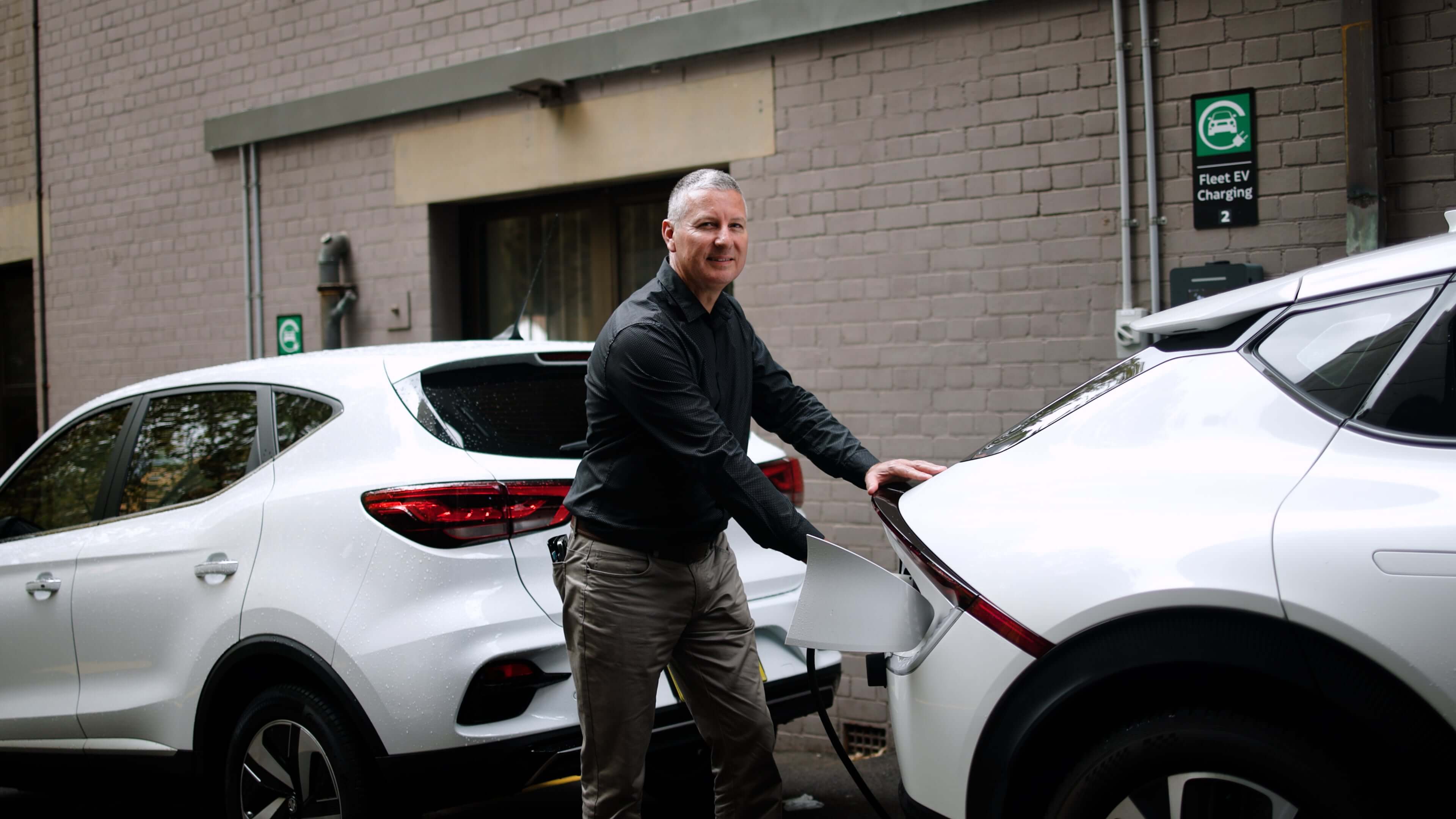Key tips from TAFE NSW
- Engage executives early and secure their support
- Plan charging infrastructure carefully before installing
- Match charging solutions to both current and future site needs
- Don’t underestimate the people side of the transition
- Use the opportunity to showcase sustainability leadership
- See if you are eligible for any financial support to help lower your costs
TAFE NSW, one of the state’s largest education providers, is taking major strides toward a cleaner transport future. It has embraced electric vehicles (EVs) as part of its commitment to reducing emissions in support of the NSW Government’s net zero goals.
“We recognise the significance of reducing our carbon footprint, especially when it comes to staff travelling between our campuses across New South Wales,” says Daniel Severino, Director Learning and Teaching at TAFE NSW.
The organisation has embarked on a large-scale shift to electric transport, with the first wave of EVs and chargers now in place. With the move already showing strong results there are plans to expand the rollout further in the year ahead.
Making the switch
TAFE NSW staff travel regularly across a wide network of campuses statewide. Reducing emissions from this travel was a natural place to start when looking at sustainability opportunities.
“There was a strong appetite to show leadership and align with the government’s climate targets,” says Manny Kallis, Fleet Manager at TAFE NSW.
Manny has been a key driver of the transition, noting that it also presents an opportunity to modernise fleet management and provide staff and students with firsthand experience of low-emissions technology.
Since 2022, TAFE NSW has converted 29 vehicles in its fleet to electric models and installed 14 charging stations. These are spread across high-use campuses in locations such as Ultimo, Wollongong and Kingswood.
The rollout includes a mix of charger types and pool vehicles Consistent performance is ensured through load management systems and smart EV management platforms.
“In the next 12 months, we’re looking to install another 47 chargers and transition 75 more vehicles,” Manny says.
Getting the planning right
TAFE NSW undertook a detailed planning process to design a solution that could meet current needs and allow for future growth.
“Planning EV charging infrastructure can present challenges, but we’ve found that with careful planning, it’s possible to reduce costs and deliver solutions that are truly fit-for-purpose,” Manny says.
That forward-thinking approach paid off. By engaging with infrastructure providers early and having clear requirements, TAFE NSW was able to avoid costly rework and deliver practical charging setups tailored to each site.
Beyond the vehicles: change management matters
TAFE NSW also recognised that transitioning to EVs is not just about hardware but is a cultural and operational shift that involves staff across the organisation.
“We’ve had to work through all the soft stuff too,” says Gino Calvisi, Director Logistics at TAFE NSW. “That means developing resources for route planning, assigning responsibilities for charging and helping people get comfortable with the new system.”
A change manager is supporting this phase and is running surveys and support programs to help staff make the adjustment.
Overall, Manny says the transition has been a success.
“Invest in the planning, the people and the process, and the result will be worth it.”

